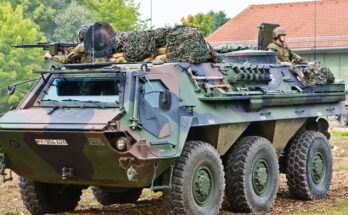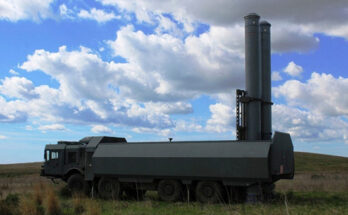by Dan Darling, International Military Markets Analyst, Forecast International.
As Bulgaria prepares to relaunch a tender seeking new combat aircraft to replace its Air Force’s small inventory of 1980s-vintage MiG-29 Fulcrum fighters, Defense Minister Krasimir Karakachanov has indicated via state-run radio that his ministry will be requesting an offer from Boeing for its F/A-18 Super Hornet jet fighter.
The addition of the Super Hornet into the pool of prospective candidates – ranging from Lockheed Martin’s F-16 to the Eurofighter Typhoon to the Saab Gripen – appears as something of a surprise given that Bulgaria has never demonstrated any interest in the 4.5-generation American fighter. Its procurement would make Bulgaria the only operator of the jet fighter in Eastern Europe, and one of the few in all of Europe (Finland and Switzerland operate older F/A-18C/D Hornets, while Spain operates the original ‘A’ variant).
The Bulgarian MiG-29 fighter replacement project remains an ongoing saga dating back to 2006, one that appeared to be approaching a culmination back in April. At that time, the former caretaker government made a statement announcing that the Gripen had emerged as the favored platform following the recommendation of an interdepartmental expert committee. That decision was based on a competition involving secondhand F-16s from Portugal, surplus production Tranche 1 Eurofighter Typhoons from Italy, and new-build Gripen C/D fighters from Sweden’s Saab.
However, the announcement in favor of the Gripen came nearly a month after snap elections were held in the country. Thus, any negotiations with Saab and a final procurement decision were left to the incoming administration – one led by Boyko Borisov in his third iteration as prime minister.
Borisov’s new government entered office just one week after the caretaker government’s statement regarding the Gripen selection. The new administration almost immediately began vacillating on whether or not to move forward on the fighter acquisition program, with the prime minister stating that the aircraft purchase would prove unaffordable in the near term. Instead, he argued, scant defense modernization funds would be better spent on armored vehicle and patrol boat purchases.
Finally, on October 5, a parliamentary special committee recommended relaunching the fighter tender, thus canceling out the earlier announced selection of the Gripen and rebooting the entire process once again.
Adding to the pressures over the fighter procurement project were issues related to the Soviet-designed MiG-29 fleet that were continuing to atrophy while the acquisition debate played out. Desperately in need of additional jet engines for its increasingly unserviceable MiG fleet, the Bulgarian government reached a BGN42.7 million ($25.5 million) deal with Russia on November 9, 2016, involving the acquisition of 10 RD-33 turbofan MiG jet engines – four new and six that were repaired by the Chernyshev Moscow Machine Building Enterprise.
However, on October 19 the Bulgarian National Assembly’s defense committee received notice that the six repaired engines it received were unusable as they were delivered without documentation of the engines’ operational history prior to overhaul. Even worse, on October 24 the MiG-29 pilots of the Bulgarian Air Force stopped all scheduled flight activities save for quick-reaction alert missions from Graf Ignatievo Air Base in south-central Bulgaria.
This places even greater pressure on Bulgaria to move quickly on a two-track process for ensuring that the country’s air combat capability is met. The MiG-29 repairs merely serve as a near-term capability bridge, while the fighter acquisition represents a longer-term solution.
Bulgaria aims to procure eight fighters sourced from NATO partners as the first of what may eventually become a two-phase acquisition project. Defense Minister Karakachanov has indicated that his preference is for new-build combat aircraft under a deal currently estimated at BGN1.5 billion ($900 million). Requests for Tender (RFTs) are to be sent to prospective manufacturers later this month, with the downselection of a preferred type potentially following by the end of July 2018.
The original hope was to have deliveries begin in 2018 and run through 2021, with in-service capability achieved by 2020. Now, that timeline may need to be revamped with an eye on pushing the dates out by a year.
Regardless, Bulgaria has waffled on a concrete decision for over a decade now, due in part to both economics and politics. Despite aid from NATO allies performing rotating joint air policing duties over Bulgarian airspace alongside the country’s scattered few remaining serviceable MiG-29s, Sofia has little additional time to waste if it wants to avoid the emergence of a capabilities gap.
Please feel free to use this content with Forecast International and analyst attributions, along with a link to the article. Contact Ray Peterson at +1 (203) 426-0800 or via email at ray.peterson@forecast1.com for additional analysis.
The Forecast International International Military Markets series examines the military capabilities, equipment requirements, and force structures inventories of 140 countries, with corresponding coverage of the political and economic trends shaping the defense market outlook for individual countries and regions.
For 50 years, Forecast International intelligence reports have been the aerospace and defense industry standard for accurate research, analysis, and projections. Our experienced analysts compile, evaluate, and present accurate data for decision makers. FI's market research reports offer concise analysis of individual programs and identify market opportunities. Each report includes a program overview, detailed statistics, recent developments and a competitive analysis, culminating in production forecasts spanning 10 or 15 years. Let our market intelligence reports be a key part of reducing uncertainties and mastering your specific market and its growth potential. Find out more at www.forecastinternational.com



